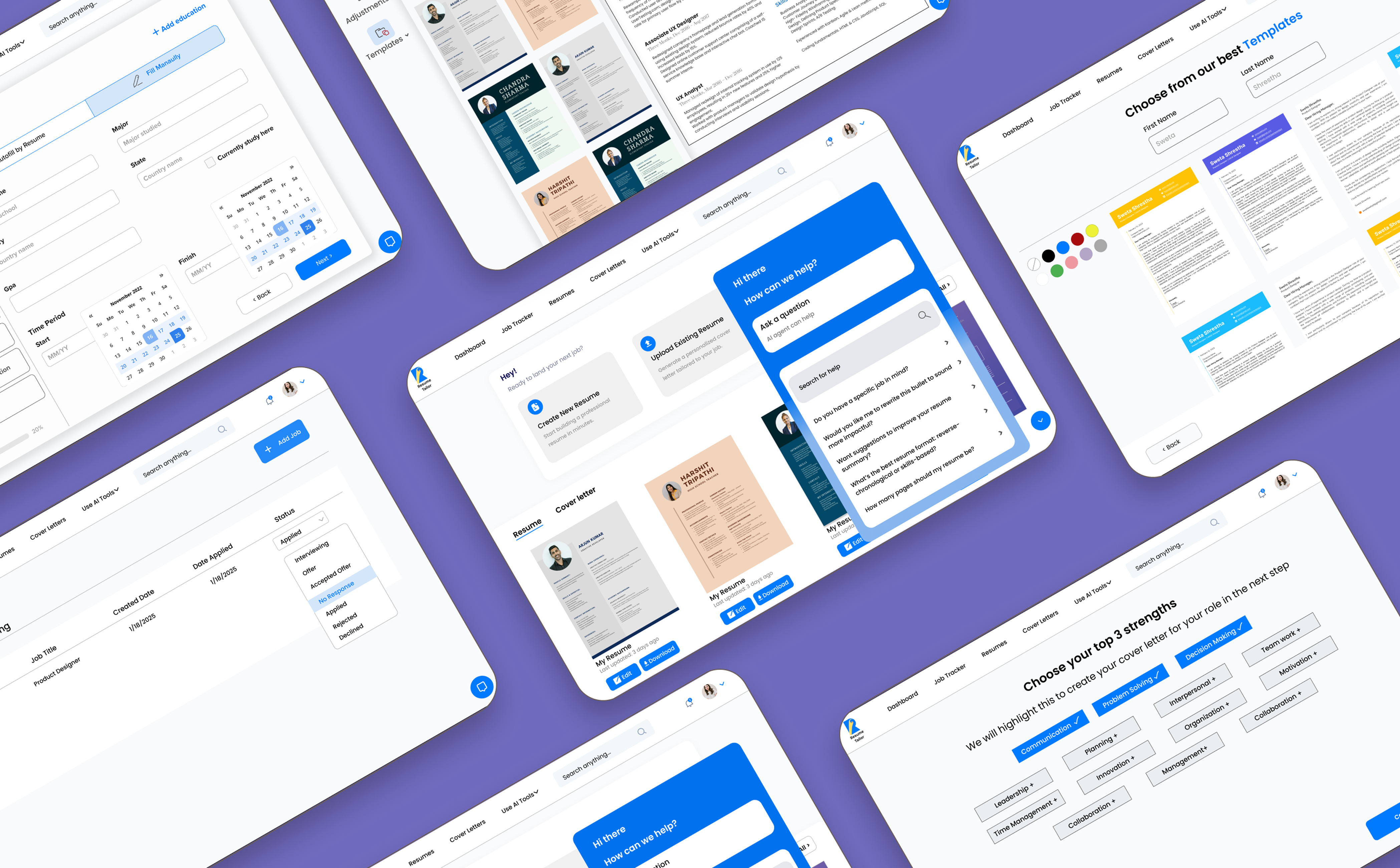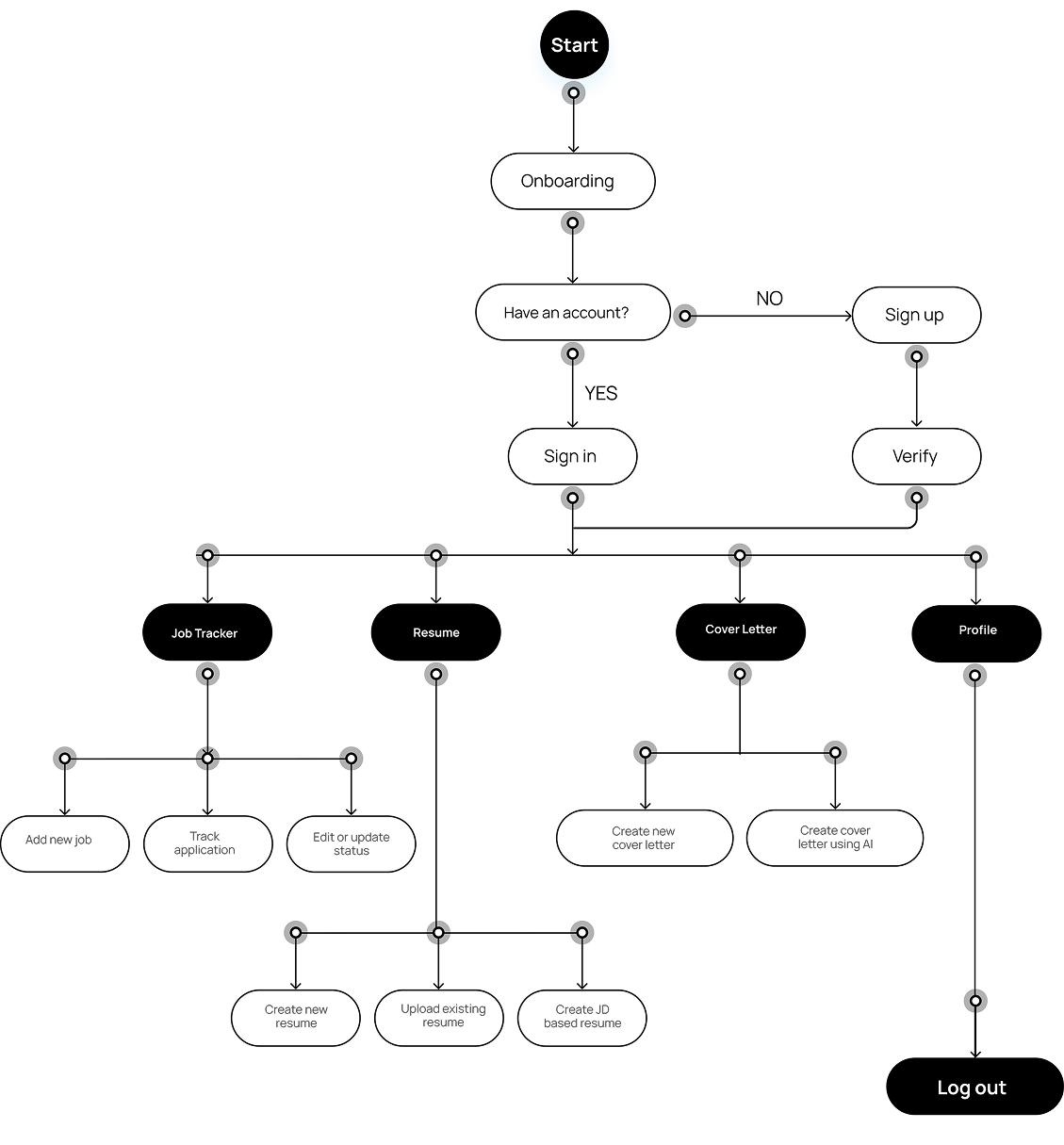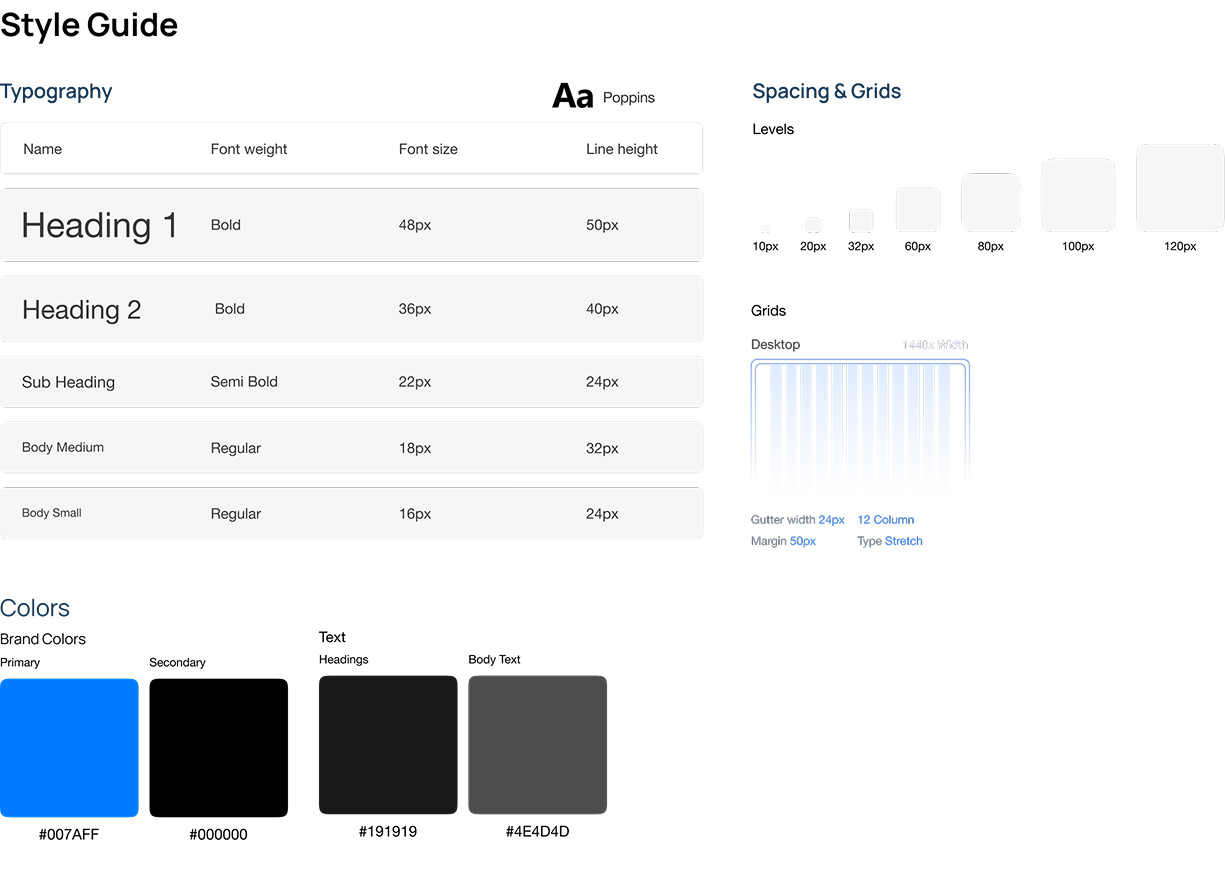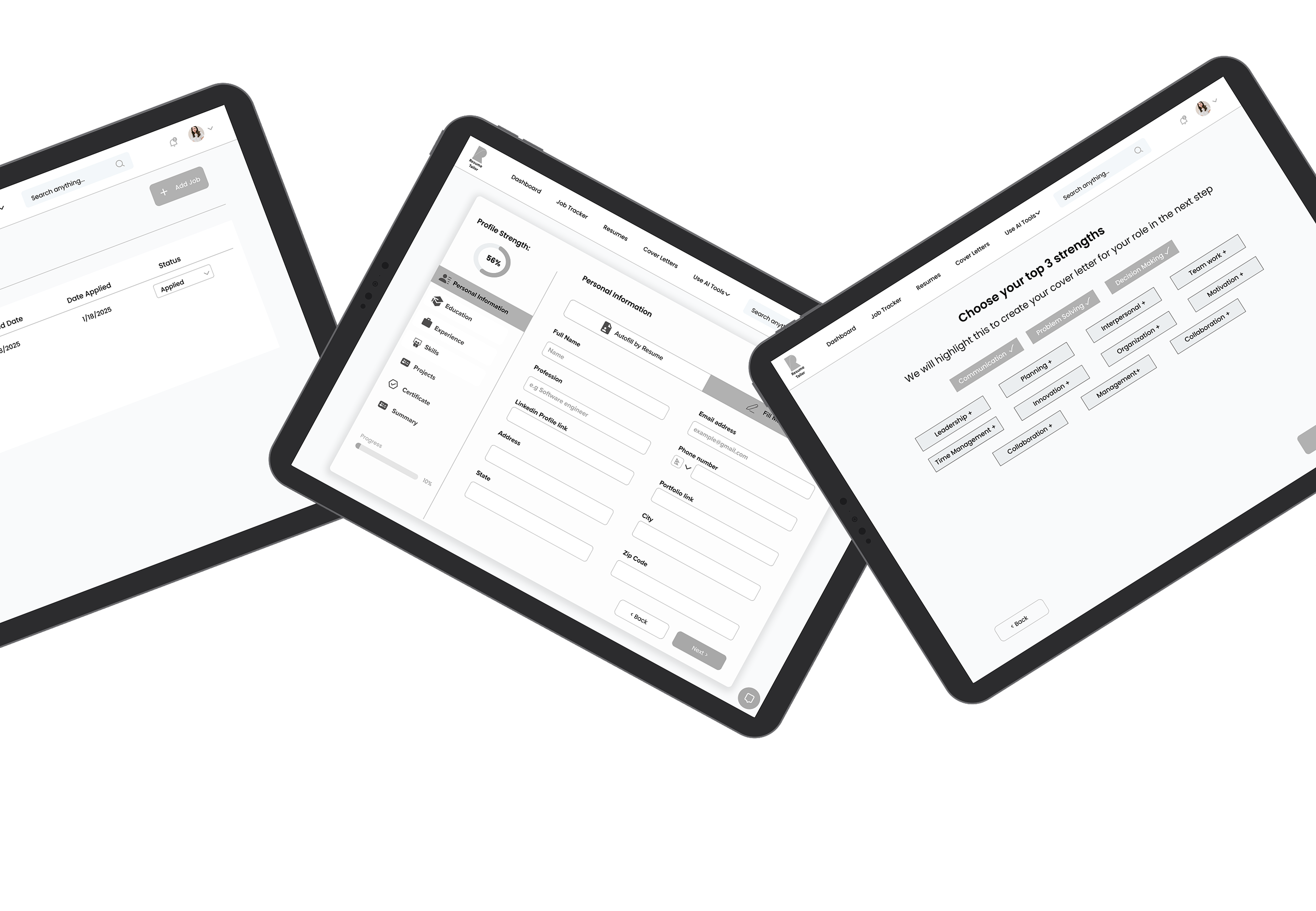Resume Tailor
AI-powered resume builder to create job-specific resumes easily.

Industry
Education Technology (EdTech)
Role
UI/UX Designer
Team
5 team members
Duration
4 Months
Approach
User-centered design
Tools
Figma, Figjam, Slack, Miro
Overview
Resume Tailor is an AI-assisted resume builder designed to help users create personalized, job-specific resumes quickly and confidently. As an Alumni, I was part of a team of skilled students contracted by our university to develop this platform. It supports users in three ways: creating resumes from scratch, uploading existing ones for editing, and tailoring resumes based on job descriptions using AI suggestions. Though initially built for students, it serves anyone looking to craft effective, targeted resumes.
Problem Space
Many job seekers rely on a single generic resume, reducing their chances in competitive markets. Research showed users struggle to tailor resumes due to lack of clarity and rigid, complex tools—especially first-time applicants. Resume Tailor addresses this by offering a simple, flexible, and intelligent way to create targeted, professional resumes with ease.
My Role
As the UX/UI Designer on a 5-person EdTech team, I contributed to the end-to-end design process using a user-centered approach. I supported user research, helped define key user flows, and designed intuitive, accessible interfaces based on real user needs. Collaborating closely with teammates through tools like Figma, FigJam, Miro, and Slack, I worked on scalable components and visuals that aligned with both user goals and product requirements throughout the 4-month project.
Problem Statement
How can we help people quickly make resumes that fit the jobs they want?
User Research & Key Insights
Qualitative Research
- Interviewed 10 job seekers (students, grads, career changers) to understand resume challenges.
- Analyzed popular resume tools (Zety, Canva, Rezi) to identify strengths and weaknesses.
- Reviewed university career portals to find gaps in existing services.
- Tested early designs with 5 users to gather feedback on usability and clarity.
Quantitative Research
We conducted a quantitative research study using Google Forms to collect data from approximately 15 users. Collaborating with my classmates, I designed and executed an online survey to analyze user preferences and challenges with creating resumes. The primary objective was to understand the impact of these services on user behavior and efficiency metrics.

Key Insights
- Users feel overwhelmed by complex resume builders and want simple, guided steps.
- Tailoring resumes for each job application is time-consuming and confusing without clear guidance.
- Real-time suggestions based on job descriptions greatly increase user confidence.
- Flexible templates that adapt to user input help users feel their resumes look professional.
- Most users want a way to upload existing resumes and easily edit or tailor them.
Design Goals
Based on user research, interviews, and survey insights, we defined strategic design goals to address the most common challenges faced by job seekers across various backgrounds—not limited to students. These goals guided our decisions throughout the product design process, ensuring Resume Tailor was intuitive, impactful, and scalable.
- Simplify Resume Building: Help users create job-specific resumes with ease through AI-driven suggestions tailored to job descriptions and industry standards.
- Support Personalized Job Tracking: Provide an organized space for users to track job applications, statuses (applied, interviewed, declined), and deadlines all in one place.
- Bridge the Gap Between Resume and Job Application: Streamline the job-seeking workflow by integrating resume tailoring, cover letter generation, and application tracking into a single seamless platform.
User Flow


Wireframes
We have gone through many iterations of low-fidelity designs and client meetings before finalizing the screens for high-fidelity designs. These are just a few examples of the many iterations we went through.

High Fidelity Design
Results & Impact
Through focused user research, iterative design, and collaboration with the university’s Career Services department, I created a resume tailoring platform that helped students quickly generate job-specific resumes with confidence and clarity. The solution included AI-powered parsing of job descriptions, smart resume templates, and a real-time editing experience tailored to both student needs and recruiter expectations.
The result was a product that didn’t just meet academic goals it made a measurable impact on students’ career readiness and became a valuable tool officially adopted by the university.
72%
Increase in Resume Completion Rate
Students were significantly more likely to finish and submit tailored resumes using the platform.
68%
Reported Boost in Confidence
Based on post-usage surveys conducted by Career Services.
59%
Faster Resume Tailoring
Compared to editing manually in Word or Google Docs.
41%
Increase in Career Services Engagement
Students were more likely to participate in resume workshops and coaching after using the tool.
Reflection
This project was a meaningful opportunity as an Alumni to design a tool for real students, hosted on the university’s servers. Balancing simplicity and flexibility was a key challenge, ensuring students could tailor resumes easily without feeling overwhelmed. Collaborating with career advisors and students gave valuable insights and validated our design choices.
Seeing the platform become part of the university’s career services highlighted the impact of user-centered design. This experience strengthened my UX, collaboration, and communication skills while showing how design can help others succeed.